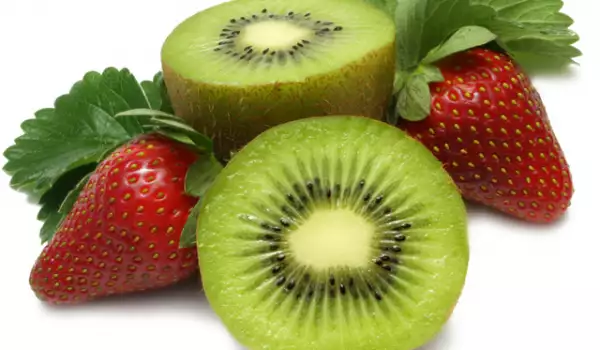Vitamin E is a family of fat-soluble vitamins that are active within the body. One of the members of this family are called tocopherols and include alpha-tocopherol, beta tocopherol, gamma-tocopherol and delta tocopherol. Other members of the vitamin E family are called tocotrienols and include alpha, beta, gamma and delta tocotrienol.
Basic functions of vitamin E
- Prevention of oxidative stress - Vitamin E helps prevent oxidative stress by working together with a group of nutrients that prevent oxygen molecules from becoming too reactive. This group includes vitamin C, glutathione, selenium, and vitamin B3.
- Maintenance of healthy skin - vitamin E directly protects skin from ultraviolet radiation.
- Protection against bladder cancer - an adequate intake of vitamin E leads to a 50% reduction in the risk of developing bladder cancer.
- Vitamin E from food sources, not supplements, helps protect against prostate cancer and Alzheimer's disease - a form of vitamin E, gamma-tocopherol, but not alpha-tocopherol, inhibits the proliferation of prostate cancer cells, without affecting healthy cells. At high doses of vitamin E in the diet, the risk of Alzheimer's disease is reduced by 67%.
- Vitamin E improves blood circulation. It is necessary for the regeneration of tissues, has a beneficial effect on premenstrual syndrome. It is also used for breast fibroid formations.
- Vitamin E ensures normal blood clotting and healing of scars by preventing the formation of scars. It lowers blood pressure and prevents cataracts of the eyes.
- Vitamin E is very useful for athletes, because it maintains the health of muscles and nerves, strengthens capillary walls and prevents the occurrence of anemia.

- Other functions of vitamin E - most of these roles include the transfer of chemical information from one cell to another or within various structures inside the cell. This transfer of chemical information is known as "cell signaling" and many researchers believe that cell signaling can not be done without the help of vitamin E.
Deficiency of Vitamin E
Low levels of vitamin E are associated with problems in the digestive system, where nutrients are poorly absorbed by the digestive tract. These problems include diseases of the pancreas, gallbladder, liver disease and more. Another area of symptoms associated with deficiency of vitamin E is called peripheral neuropathy. This area focuses on the nervous system problems, hands, legs and feet. Pain, numbness and loss of sensation in these extremities is associated with a lack of vitamin E. Skin problems are also closely related to the shortage of this vitamin.
When taken in high doses of 3000 IU or more, it has been shown that vitamin E has toxic effects. These toxic effects include intestinal cramps and diarrhea, fatigue, double vision and muscle weakness. The National Academy of Sciences of the United States sets an upper limit for vitamin E intake of 1 000 mg (or 1, 500 IU of vitamin E as alpha-tocopherol) for persons 19 and older and is valid only for vitamin E as supplements.
Exposure to air and factory processing is particularly harmful for the content of vitamin E in the diet. In wheat, for example, where the majority of vitamin E is found in fetuses, processing removes 50-90% of its volume. When processing by baking or making pasta, the content of alpha-tocopherol is decreased by nearly 90%, and beta-tocopherol - 43%.
Using certain medicines can reduce the supply of vitamin E in the body, most notably anticonvulsant drugs and cholesterol-lowering drugs. Long-term, regular use of mineral oil may also reduce the supply of vitamin E in the body.
The fact is, vitamin E is highly dependent on vitamin C, vitamin B3, selenium and glutathione, which indicates that a diet rich in vitamin E may not have its optimal effect unless it is also rich in foods that provide these other substances.
Benefits of Vitamin E
Vitamin E may play an important role in the prevention and / or treatment of the following diseases: Acne, Alzheimer's disease, asthma, atherosclerosis, cancer, diabetes, epilepsy, gout, Graves' disease, male infertility, macular degeneration, menopause, migraine, multiple sclerosis disease Parkinson's, psoriasis, rheumatoid arthritis, cataracts and more.
The vast majority of dietary vitamin E supplements contain a form of the vitamin, namely alpha-tocopherol. In particular, most supplements contain s natural form of alpha-tocopherol, called D-alpha-tocopherol. You can find supplements containing mixed forms of this vitamin.
Overdose of vitamin E
Vitamin E is very useful, but its overdose can be harmful in some cases. Increased intake can lead to increased blood pressure and triglycerides and this may reduce the need for insulin in diabetics. For this reason, vitamin E is taken by diabetics to control blood sugar levels and if necessary to adjust their dose of insulin. It is recommended to gradually increase the administered dose vitamin E. In very rare cases, the organism may show greater sensitivity to the vitamin and then, an allergic reaction.
Overall, vitamin E is a relatively non-toxic vitamin. At higher doses, you may experience diarrhea, flatulence, nausea and high blood pressure.
Sources of Vitamin E
Excellent sources of vitamin E are mustard, radish and sunflower seeds, and the many good sources include almonds and spinach. Good sources of vitamin E are parsley, kale, papayas, olives, peppers, Brussels sprouts, kiwi, tomatoes, blueberries and broccoli. You can find vitamin E in corn and soybean oil, all kinds of nuts, lettuce, peas, green beans, eggplants and carrots. It is found in blueberries and avocados. Animal products are generally low in this vitamin.



















Comments